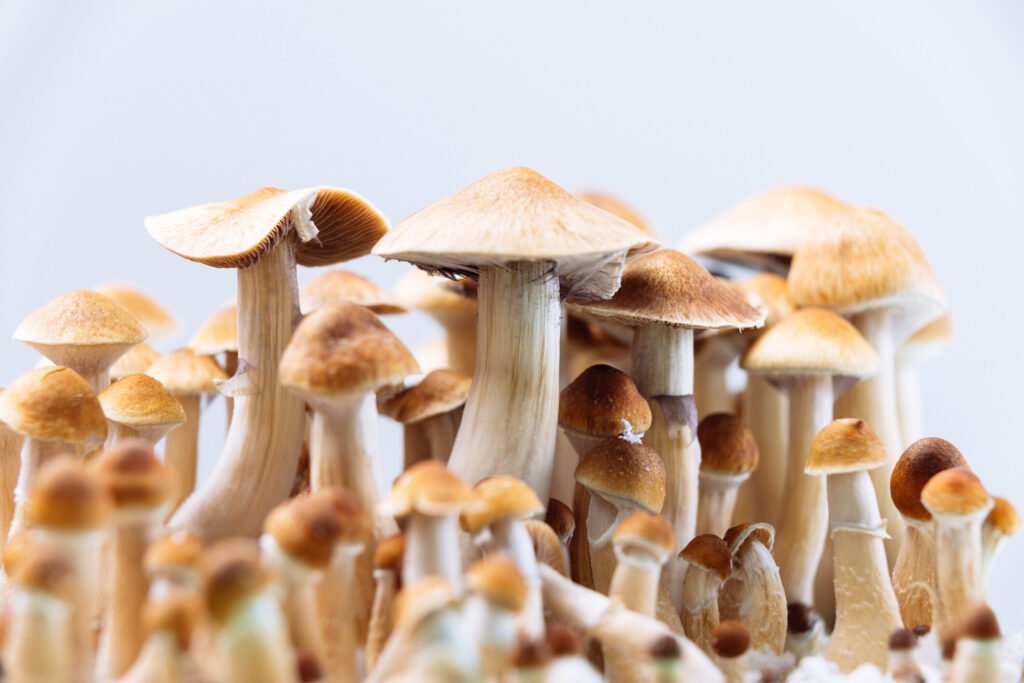
The world of psychedelics has seen a resurgence in interest and exploration, with substances like magic truffles taking center stage. Known for their mind-altering effects, magic truffles contain psilocybin, a naturally occurring psychedelic compound that has been used for centuries in spiritual and cultural rituals. In modern times, magictruffleshrooms are being rediscovered for their potential benefits, including enhanced creativity, therapeutic uses, and a deep sense of connection to the world around us.
In this article, we’ll explore what magic truffles are, how they differ from traditional magic mushrooms, their effects, the science behind their use, and how to approach them responsibly.
What Are Magic Truffles?
Magic truffles, often referred to under the brand name MagicTrufflesShrooms, are technically sclerotia—the underground part of a fungus that stores nutrients in a hardened form. Unlike magic mushrooms, which produce a visible fruiting body (the part above ground), truffles remain below the soil’s surface. Despite their differences in appearance, both magic truffles and magic mushrooms contain psilocybin, the compound responsible for their psychedelic effects.
When ingested, psilocybin in magic truffles is converted by the body into psilocin, which interacts with serotonin receptors in the brain. This interaction leads to alterations in perception, mood, and cognition, often resulting in profound visual experiences, shifts in thought patterns, and a heightened sense of connection to one’s surroundings. The effects can vary greatly depending on the dosage, individual biology, and the setting in which they are consumed.
Magic Truffles vs. Magic Mushrooms: What’s the Difference?
Although they share similar psychoactive properties, magic truffles and magic mushrooms differ in several key aspects:
- Physical Form: Magic mushrooms are known for their cap-and-stem structure, while magic truffles appear as small, nugget-like formations that grow underground. This difference in form can make truffles less recognizable than their mushroom counterparts.
- Legal Status: In many parts of the world, including the Netherlands, magic truffles are legal to sell and consume, while magic mushrooms have been more strictly regulated. This has made magic truffles a popular alternative for those seeking a legal way to explore psychedelics. Their legality varies from country to country, so it is important to understand local regulations before purchasing or consuming them.
- Potency: Magic truffles are generally considered to have a slightly lower potency compared to magic mushrooms, although the effects depend heavily on the species and preparation method. Despite being milder, magic truffles can still offer profound psychedelic experiences, especially for those new to psychedelics.
The Psychedelic Experience with Magic Truffles
The effects of magic truffles can vary widely depending on the dosage and the individual’s state of mind. A low to moderate dose often leads to feelings of euphoria, enhanced sensory perception, and mild visual distortions like colors becoming more vivid or patterns appearing to move. This level of experience is often described as a deep meditative state, where users may feel a greater connection to nature and introspective insights.
A higher dose of magic truffles can produce more intense visual hallucinations, a sense of time distortion, and a feeling of dissolving boundaries between the self and the surrounding environment. Users may experience a phenomenon known as ego dissolution, where they lose the sense of being a separate entity from the world around them. This can lead to a sense of unity with the universe, often described as a spiritual awakening or mystical experience.
While the experiences can be deeply rewarding, they can also be challenging if approached without proper preparation. It’s common for individuals to experience moments of emotional intensity or face difficult thoughts during a trip. This is why many recommend taking magic truffles in a controlled environment, ideally with a trusted guide or sitter who can provide support if needed.
The Science Behind Psilocybin and Its Benefits
The primary active compound in magic truffles, psilocybin, has been the focus of increasing scientific research in recent years. Studies have shown that psilocybin can have a profound impact on the brain’s connectivity, enhancing communication between different regions. This increased connectivity is believed to be behind the creative thinking, problem-solving abilities, and shifts in perspective often reported by users.
Research has also highlighted the therapeutic potential of psilocybin in treating conditions such as depression, anxiety, PTSD, and addiction. Clinical trials have shown that, under the right conditions, psilocybin can help patients confront deeply entrenched emotional issues, leading to lasting positive changes in their mental well-being. The Johns Hopkins Center for Psychedelic and Consciousness Research has been a leader in these studies, demonstrating significant reductions in depression and anxiety symptoms in patients who underwent psilocybin-assisted therapy.
While the benefits are promising, it’s essential to approach magic truffles with respect and caution. Psilocybin is a powerful substance, and its effects can be unpredictable, especially at higher doses. It’s recommended to start with a lower dose to gauge one’s sensitivity before exploring more intense experiences.
Responsible Use of Magic Truffles
Using magic truffles responsibly is key to having a positive experience. Here are some guidelines for those considering trying them:
- Know Your Source: Ensure that you are purchasing magic truffles from a reputable source that follows proper cultivation and safety standards. Many online vendors like MagicTrufflesShrooms provide detailed information about their products and sourcing practices.
- Start Small: If you’re new to psilocybin, start with a low dose. This allows you to familiarize yourself with the effects and gauge your comfort level. A common starting dose is around 5-10 grams of fresh truffles, which provides a mild experience.
- Set and Setting: Your mindset and environment play a crucial role in shaping your experience. Choose a comfortable and safe place where you feel at ease, preferably with someone you trust nearby. A positive mindset can help facilitate a more enjoyable journey.
- Hydration and Nutrition: It’s important to stay hydrated before, during, and after consuming magic truffles. Avoid consuming alcohol or other substances that might interact with psilocybin, as this can lead to unpredictable effects.
- Reflect Afterwards: Many users find that reflecting on their experiences with magic truffles helps integrate the insights they gained. Keeping a journal or discussing the experience with a trusted friend can be helpful.
The Cultural and Spiritual Significance of Magic Truffles
Magic truffles and their effects are not a modern discovery. Cultures around the world have used psilocybin-containing mushrooms for thousands of years in spiritual and shamanic practices. Indigenous communities in Central and South America, for example, have long revered these substances as a means of connecting with the spiritual realm and accessing deeper layers of consciousness.
Today, many people seek out magic truffles as a means of exploring their own spirituality or understanding their place in the world. Unlike purely recreational substances, the psychedelic experience is often viewed as a tool for personal growth and self-discovery. In the right context, magic truffles can provide a sense of connection to nature, a release of emotional burdens, and a renewed perspective on life.
Legal and Cultural Considerations
The legal status of magic truffles varies widely across different countries. In places like the Netherlands, magic truffles can be legally purchased in smart shops, making it a popular destination for those seeking to experience psilocybin safely. In other countries, such as the United States, psilocybin remains classified as a Schedule I substance, though there are movements in cities like Denver and Oakland to decriminalize its use.
As public perception of psychedelics continues to shift, there is hope that more countries will explore the therapeutic potential of substances like magic truffles. This could lead to more regulated environments where individuals can access these substances safely and under professional guidance.
Conclusion: A Journey into the World of Magic Truffles
MagicTrufflesShrooms offers a gateway into the fascinating world of psychedelic truffles. Whether for spiritual exploration, therapeutic purposes, or simply out of curiosity, magic truffles provide a profound way to experience the mind’s depths. By approaching them with respect, preparation, and a sense of adventure, many people have found new insights, a deeper connection to the natural world, and a renewed appreciation for life.
As the conversation around psychedelics evolves, magic truffles continue to be a subject of both scientific inquiry and personal exploration. They remind us that, within the natural world, there are still mysteries left to uncover—one truffle at a time.


